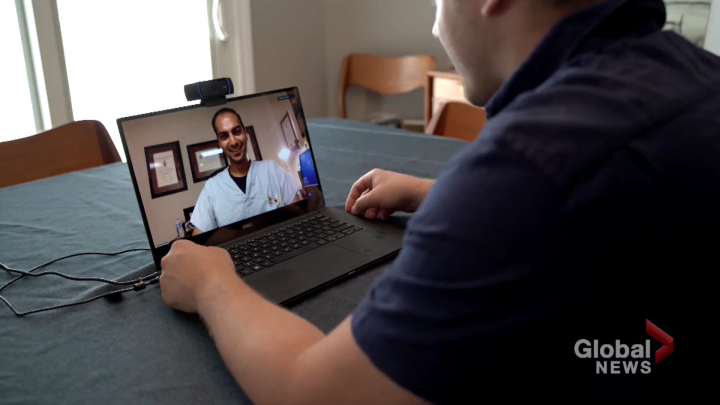Wait times in emergency rooms can be long and unpredictable.
Since the onset of COVID-19, doctors say they have been hearing how patients are more and more anxious about going to the hospital.
“The number one question I get from friends and family is, ‘Do I need to go to emergency?” Dr. Greg Rutledge says.
Rutledge is the chief of emergency medicine at St. Joseph’s Healthcare in Hamilton.
When the pandemic hit, doctors across the province noticed a sharp decline in the number of people coming to their emergency departments.
In some cases, doctors say emergency department waiting rooms were nearly empty, particularly when fears were at their peak about contracting COVID-19.
“There were some people who needed to access emergency (departments) but were choosing not to out of fear or concern or wanting to stay isolated and quarantined” Rutledge says.
In the summer, St. Joseph’s Healthcare started offering virtual emergency room visits.
The process is simple. Prospective patients go to the hospital’s website and click on a link to request an appointment, then enter some basic information.
Within an hour or so, they get a response from the hospital with a time and a secure video link that allows them to connect with an emergency department physician.
Rutledge says doctors are able to discern quite a bit through video conferencing.
“We as physicians can see you, so we can get a sense of how sick or well you are just by talking to you on the phone,” Rutledge says.
In Ottawa, CHEO has been offering virtual emergency department visits since May. They were the first hospital in Canada to do this for children.
Doctors say patients can always go to the ER. A virtual visit is simply another tool to help families decide the best course of action.
Dr. Terry Varshney works as a pediatric emergency physician at CHEO.
She says when she saw the empty waiting rooms, she was worried.
She knew people were staying away, even though they needed emergency care.
Varshney says the virtual visit is a good way for families to get the help they need, and for doctors to explain how hospitals are still safe places to go, even during a pandemic.
“A lot of what we do in medicine is education and reassurance to the family,” Varshney says. “So we are still able to do that virtually, which is really great for us to be able to give that type of care to kids in need.”
At St. Joseph’s Healthcare, doctors say they are currently seeing between three and four patients a day. They have the capacity to consult with up to 48 in one day.
Doctors there say between 80 and 90 per cent of their patients have not needed to go to the hospital. If a patient does need to go the emergency department, the medical team has access to the information gathered from the virtual consultation.
Rutledge says doctors can start getting the proper orders ready, and have more insight as to why the virtual physician felt their patient needed to be seen in person.
Between Oct. 5 -12, 89 patients were seen at the virtual emergency department at CHEO.
A spokesperson for the hospital says 86 per cent were able to get the care they needed and remain at home.
Doctors in Hamilton say they looking at ways to expand their virtual services.
Soon, physicians will be working with community care paramedics, a group dedicated to checking up on patients who have left the hospital.
“If they go in on one day are realize that patient is a bit dehydrated, may need some fluids, may need some other things that they can’t do without a physician order, they will connect with us,” Rutledge says.
“We can have a conversation, and they can do those things without having to come into hospital.”
Paramedics say limiting contact with others, but maintaining care, will be a game changer for the fall. This new reality will be especially helpful for people at risk during the flu season.
Mike Sanderson, the chief of the Hamilton paramedic service, says he’s excited about the partnership.
“If you don’t have the flu and you don’t have the coronavirus, keeping you out of the hospital probably particularly for senior citizens a good thing to do,” Sanderson says.
Rutledge says this new way of thinking about medicine will lay the foundation for other possibilities. He says he hopes that his team will be able to offer more options to patients in long term care homes, or even in rural areas.
“COVID has taught us that there isn’t one way to do this,” Rutledge says. “It’s somewhat of an exciting time… it’s weird to say exciting time, but exciting to move medicine forward with fresh ideas.”
- Global News
